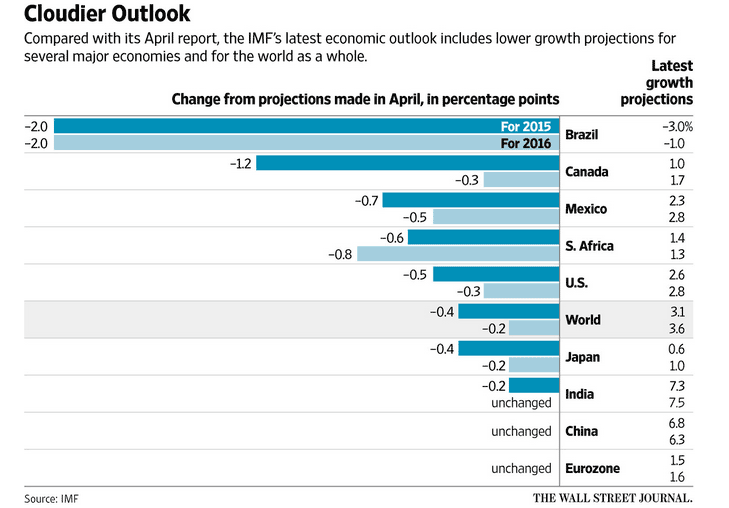t seems like just yesterday that business leaders in Western economies and Japan were intently focused on developing economies, based on the belief that most of the global growth would come frorm those markets.
Likely in the long or even medium term that view is still correct, but for right now almost the opposite is happening, raising the risk of a global recession.
As seems to be a clear pattern in recent years, the International Monetary Fund (IMF) start the year with modestly bullish forecasts, only to scale them back as the year progresses.
Right on queue that has happened again here In 2015, as last week the IMF cut its projections for global growth again to 3.1% this year from its previous forecast of 3.3% in April. That in turn was down from growth levels forecast in 2014 for 2015.
The IMF also cut its forecast for emerging markets to 4% this year, down 0.2 percentage point from its last update in July. That marks the fifth consecutive year of declining growth in developing economies and a forecast that if accurate would be nearly just half the rate the IMF recorded six years ago.
The slump in developing economies stems from several factors, noticeable the steep drop in commodity prices, given the dependence on commodity exports in many developing economies. Those falling prices are also hurting some developed economies as well, such as Canada and Australia.
Additionally, (and not unrelatedly) the rise of the US dollar is also a factor, as it reduces the value of investments in many countries and has led to investors pulling huge sums of cash out of developing economies over the past year, stunting growth. Private and public sector debt levels also remain an issue.
Below is a chart of the IMF’s revised f forecast for 2015 and 2016 for key countries and the world overall.

Notable to SCDigest, these IMF numbers project that this year and next, India will surpass China in terms of growth rates, and substantially so In 2016. BTW, Chinese exports were down 37x% last month, and imports down a whopping 20.4% - not good signs.
Falling world trade is also an issue. Also last week, Mearsk Line CEO Soren Skou says the companies forecast for the global growth in container traffic in 2015 is now just 1.5-2% year over year. Ten years ago, container growth of 5-6% was common.
No comments:
Post a Comment